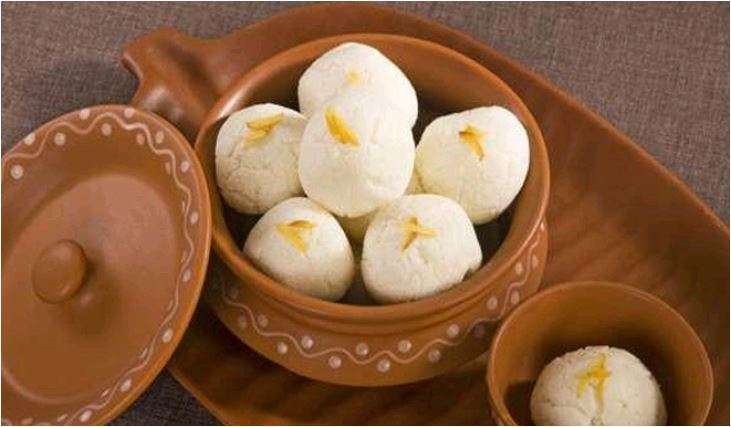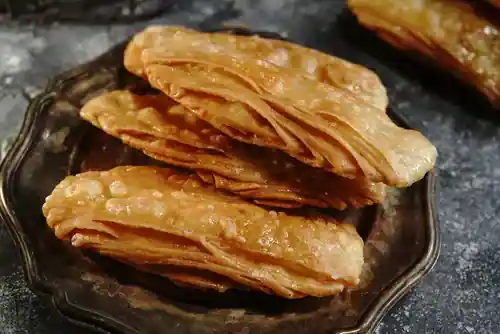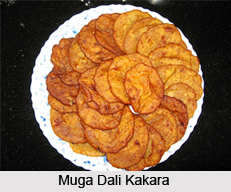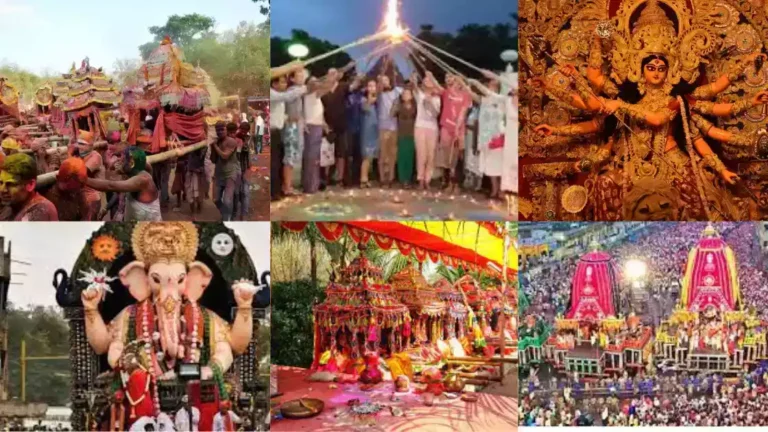Famous Odisha Foods(2023)
Odisha, a state in eastern India, has a rich culinary tradition that reflects its cultural diversity and geographical influences. Foods Of Odisha is known for its unique flavors, simplicity, and the use of local ingredients. The cuisine of Odisha offers a wide variety of vegetarian and non-vegetarian dishes, including seafood delicacies, snacks, sweets, and more. Exploring the local cuisine of Odisha is a delightful experience for food enthusiasts. Here are some popular dishes and food items from Odisha Foods:
Pakhala(water rice)
Pakhala, also known as water rice, is a traditional Odia dish that involves fermenting rice and then mixing it with water and curd. It is a popular dish in Foods Of Odisha, especially during hot summers, as it is considered refreshing and cooling.  Here’s a general outline of the preparation of Pakhala: Ingredients: Cooked rice (preferably leftover rice) Water Curd (yogurt) Salt (to taste) Procedure : Cook the Rice: Start by cooking the rice as you would normally do. It is best to use leftover rice or slightly overcooked rice that has cooled down. Ferment the Rice: Take the cooked rice and spread it in a wide container or plate. Allow it to cool completely. Once cooled, cover the rice with a clean cloth and leave it at room temperature for around 8 to 10 hours or overnight. Fermentation will occur during this time. Mixing the Rice with Water and Curd: After the rice has fermented, transfer it to a large bowl. Add water to the bowl, enough to submerge the rice completely. The ratio of rice to water can vary based on personal preference. Some prefer a soupy consistency, while others prefer it less watery. Add Curd and Salt: Once the rice is submerged in water, add a generous amount of curd (yogurt) to the bowl. The curd adds a tangy flavor to the Pakhala. Mix it well with the rice and water. Then, add salt according to your taste preference. Mix again to ensure the flavors are evenly distributed. Let it Rest: After mixing, allow the Pakhala to rest for some time, preferably for an hour or two. This resting period allows the flavors to meld together and enhances the taste. Serve and Enjoy: Pakhala is typically served in a bowl or plate. It can be consumed as is or paired with various accompaniments. Common accompaniments include fried fish, roasted vegetables, pickles, and green chili. Enjoy the refreshing and tangy flavors of Pakhala! Note: Pakhala is a versatile dish, and different variations exist across regions and households. Some people prefer adding mustard paste or roasted cumin powder to enhance the flavor. The water-to-rice ratio, as well as the amount of curd and salt, can be adjusted according to personal preference. It’s important to maintain cleanliness and hygiene while preparing Pakhala, especially during the fermentation process, to ensure food safety. |
Dalma:
Dalma is a popular dish from Odisha Foods that is made with lentils and mixed vegetables. It is a nutritious and flavorful preparation.  Here’s a typical recipe for making Dalma: Ingredients: 1 cup pigeon pea lentils (toor dal) 2 cups mixed vegetables (such as pumpkin, brinjal, potato, beans, and drumsticks), chopped 1 onion, finely chopped 2 tomatoes, finely chopped 2 green chilies, slit 1-inch piece of ginger, grated 3-4 garlic cloves, minced 1 teaspoon turmeric powder 1 teaspoon cumin seeds 1 teaspoon mustard seeds 2 dried red chilies 2 tablespoons ghee or oil Salt to taste Fresh coriander leaves for garnishing Procedure : Rinse the pigeon pea lentils (toor dal) and soak them in water for about 30 minutes. Then, drain the water. In a pressure cooker, add the soaked lentils, chopped mixed vegetables, chopped onion, chopped tomatoes, slit green chilies, grated ginger, minced garlic, turmeric powder, and salt. Add enough water to cover the ingredients in the pressure cooker. Close the lid and pressure cook for about 4-5 whistles, or until the lentils and vegetables are cooked and soft. Once the pressure is released, open the cooker and check the consistency. If it seems thick, you can add some more water to adjust the consistency. Heat ghee or oil in a separate pan. Add cumin seeds, mustard seeds, and dried red chilies. Let them splutter. Pour the tempering (tadka) over the cooked lentil and vegetable mixture in the pressure cooker. Stir well to combine. Simmer the Dalma on low heat for a few minutes to allow the flavors to blend together. Garnish with freshly chopped coriander leaves. Serve the Dalma hot with steamed rice or roti. Dalma is a versatile dish, and you can customize it by adding your choice of vegetables or adjusting the spices according to your taste. It is a wholesome dish that is enjoyed as a main course in Odisha and is often served with rice or roti. |
Chhena Poda:
Chhena Poda is a delicious dessert from Odisha made with cottage cheese (chhena), sugar, and ghee. It has a caramelized crust and a soft, sweet, and slightly smoky texture.  Here’s a basic recipe for preparing Chhena Poda: Ingredients: 500 grams fresh cottage cheese (chhena) 1 cup sugar (adjust according to taste) 1/4 cup semolina (sooji) 1/4 cup wheat flour 1/4 cup ghee (clarified butter) 1/2 teaspoon cardamom powder A pinch of baking powder Chopped nuts (optional, for garnishing) Procedure : Preheat the oven to 180°C (350°F). Grease a round cake pan with ghee and keep it aside. In a large mixing bowl, crumble the fresh cottage cheese (chhena) with your hands until it becomes smooth and free of lumps. Add sugar to the crumbled chhena and mix well. Allow the mixture to rest for 10-15 minutes to let the sugar dissolve. After 10-15 minutes, add semolina (sooji), wheat flour, ghee, cardamom powder, and baking powder to the chhena-sugar mixture. Mix everything thoroughly to form a smooth batter. Pour the batter into the greased cake pan and spread it evenly. Garnish the top with chopped nuts if desired. Place the cake pan in the preheated oven and bake for about 45-50 minutes or until the top turns golden brown and a toothpick inserted in the center comes out clean. Once done, remove the Chhena Poda from the oven and let it cool for a while. Once cooled, carefully remove the Chhena Poda from the pan, cut it into desired shapes, and serve. Chhena Poda tastes best when served warm or at room temperature. It can be enjoyed as a dessert or as a sweet treat with tea or coffee. The caramelized crust and the soft chhena interior make it a delightful sweet indulgence from Odisha. |
Machha Besara:
Machha Besara is a popular fish curry in Odisha. It is prepared using mustard paste, turmeric, garlic, and other spices. The fish is marinated in the spice mixture and then cooked to perfection. Machha Besara is known for its rich and tangy flavor. Ingredients : This recipe is prepared from small fishes known as maurali (eatable Murla). Doctors says “Maurali fish is rich in calcium and phosphorus and very good for health and eye. Mauroli Maach Lemon Juice turmeric powder mustard oil onion onion paste, garlic paste tomato red chilly powder Luke warm water Salt… Procedure : Marinate the fish with lemon juice, salt, and turmeric powder then fry all these with mustard oil. Then place another kadai on heat and warm 3tbsp mustard oil then fry the sliced onion till brown then add 2tsp onion paste, garlic paste, termite, and pepper paste then stir it add smashed tomato then red chilly and turmeric powder add 2tbsp Luke warm water. Stir it for 10mins after the oil start to release add the fried fish again 2 tbsp Luke warm water then add the green chilly coriander leaves turn off the gas and covered it left it for 5mins then served with hot rice. |
Rasagola:
Rasagola is a popular sweet dish from Odisha, known for its soft, spongy cheese balls soaked in sugar syrup. Rasagola is a delightful sweet that can be enjoyed on its own or as a part of festive meals and special occasions.  Here is a general outline of the preparation of Rasagola: Here is a general outline of the preparation of Rasagola:Ingredients: 1 liter of cow’s milk 2 tablespoons of lemon juice or vinegar 1 cup of sugar 4 cups of water 1 teaspoon of cardamom powder (optional) A few strands of saffron (optional) Rose water (optional) Procedure : Cheese Preparation: Boil the milk in a heavy-bottomed pan. Once the milk comes to a boil, reduce the heat and add lemon juice or vinegar. Stir gently until the milk curdles and the whey separates from the cheese solids. Turn off the heat and let it sit for a few minutes. Strain the curdled milk through a cheesecloth or muslin cloth to separate the cheese solids (chhena) from the whey. Rinse the cheese under cold water to remove any lemony flavor. Cheese Kneading: Gather the cheesecloth with the cheese solids and squeeze out excess water. Transfer the chhena to a clean surface or a large plate. Knead the chhena with the heel of your hand until it becomes smooth and soft. This process may take around 10-15 minutes. Shaping the Cheese Balls: Divide the kneaded chhena into small portions and roll them into smooth balls without any cracks. Ensure that the balls are firm but not too tight. Sugar Syrup: In a wide, deep pan, add water and sugar. Bring the water to a boil, stirring to dissolve the sugar completely. Add cardamom powder, saffron strands, and rose water (if desired) to enhance the flavor. Cooking Rasagola: Gently drop the chhena balls into the boiling sugar syrup. Cover the pan with a lid and let the rasagola cook on medium heat for about 15-20 minutes. During the cooking process, the rasagola balls will expand and become spongy. Stir occasionally, ensuring that the rasagolas are cooking evenly. Cooling and Serving: Once the rasagolas are cooked, turn off the heat and let them cool in the sugar syrup. Allow them to soak in the syrup for a few hours or refrigerate overnight for best results. Serve the rasagolas chilled, along with the sugar syrup. Note: The above recipe provides a general guideline for making Rasagola. It is advisable to follow a detailed recipe with specific measurements and instructions for more precise results. |
Santula:
Santula is a traditional and simple vegetable dish from Odisha that is known for its light and flavorful preparation. It is made with a mix of vegetables, typically including pumpkin, beans, brinjal (eggplant), and potatoes.  Here’s a basic recipe for preparing Santula: Ingredients: 1 cup pumpkin, peeled and diced 1 cup beans, chopped 1 cup brinjal (eggplant), diced 1 cup potatoes, peeled and diced 2 tablespoons oil (preferably mustard oil) 1 teaspoon mustard seeds 1 teaspoon cumin seeds 2-3 dry red chilies 1 teaspoon turmeric powder Salt to taste Fresh coriander leaves for garnishing (optional) Procedure : Heat oil in a pan or kadai over medium heat. Add mustard seeds and cumin seeds to the hot oil. Let them crackle. Add the dry red chilies and sauté for a few seconds until they become aromatic. Add the diced vegetables (pumpkin, beans, brinjal, and potatoes) to the pan. Stir well to coat the vegetables with the spices and oil. Sprinkle turmeric powder and salt over the vegetables. Mix everything together. Cover the pan with a lid and cook the vegetables on low to medium heat. Stir occasionally to prevent sticking and ensure even cooking. Cook until the vegetables are tender and cooked through. The Santula should have a slightly crunchy texture, so avoid overcooking the vegetables. Once the vegetables are cooked, remove the pan from heat. Garnish with fresh coriander leaves (optional). Serve Santula hot with steamed rice or roti. Note: You can customize the vegetables used in Santula according to your preference and availability. Feel free to include other vegetables like ridge gourd, drumsticks, or spinach based on your taste. Santula is a versatile dish, and you can adjust the spices and flavors to suit your preference. Some variations include adding grated coconut or a sprinkle of roasted cumin powder for additional taste. Enjoy this light and nutritious Odia dish as part of your meal. |
Khaja:
Khaja is a popular sweet dish from Odisha, known for its flaky texture and delightful taste. It is made with a few simple ingredients and involves a specific preparation method. Here’s a basic recipe for making Khaja: Ingredients: For the dough: 2 cups all-purpose flour (maida) ¼ cup ghee (clarified butter) A pinch of salt Water, as needed For the sugar syrup: 1 cup sugar ½ cup water A few saffron strands (optional) Cardamom powder, for flavoring Ghee or oil, for deep frying Procedure : Dough Preparation: In a mixing bowl, combine the all-purpose flour, ghee, and a pinch of salt. Mix the ingredients well until they resemble bread crumbs. Gradually add water and knead to form a smooth and firm dough. The dough should not be too soft or too hard. Cover the dough with a damp cloth and let it rest for about 30 minutes. Sugar Syrup Preparation: In a saucepan, add sugar and water. Heat the mixture over medium heat until the sugar dissolves completely. Add saffron strands and cardamom powder for additional flavoring. Simmer the syrup for a few minutes until it reaches a sticky consistency. Remove it from the heat and keep it aside. Khaja Preparation: Divide the dough into small equal-sized balls. Take a dough ball and roll it out into a thin, rectangular-shaped sheet using a rolling pin. The sheet should be thin but not too thin to tear easily. Apply a little ghee or oil on the sheet. Fold the sheet lengthwise into thirds, like a letter. Rotate the folded dough 90 degrees and roll it out again into a thin rectangular sheet. Apply ghee or oil and fold the sheet again into thirds. Repeat this process 3-4 times to create multiple layers. After the final folding, roll out the dough gently into a thin rectangular sheet. Cut the sheet into small diamond-shaped or rectangular pieces. Heat ghee or oil in a deep frying pan over medium heat. Fry the cut pieces of dough in batches until they turn golden brown and crispy. Remove the fried Khaja from the oil and drain excess oil on a kitchen towel. Dip the fried Khaja into the prepared sugar syrup, making sure they are well-coated. Allow them to soak in the syrup for a few minutes. Remove the Khaja from the syrup and place them on a plate to cool and solidify. Your homemade Khaja is now ready to be served and enjoyed as a sweet treat! Note: The proportions and cooking times provided are approximate and may vary based on personal preferences and desired outcomes. It’s always recommended to follow a detailed recipe for precise measurements and instructions. |
Muga Dali Kakara
Muga Dali Kakara is a traditional sweet dish from Odisha, made with mung dal (split green gram) and jaggery. It is often prepared during festivals or special occasions. Here’s a basic recipe for Muga Dali Kakara: Ingredients : Moong Dal(Muga Dali) – 2 cups soaked Semolina (Suji) – 1 1/2 cups Wheat Flour (Atta) – 3/4 cup Jaggery (Guda) – 1 1/2 cup Pepper – 1/2 tsp crushed Cardamom powder – 1/2 tsp powder Oil for deep frying Salt as per taste. Water Procedure : First, take soaked moong dal in a pressure cooker with 2 cups water and some salt. Then close the lid and cook it for 3-4 whistles on medium flame. Now switch off the flame and keep it aside for 5 mins. Then take a kadhai and pour all the boiled moong dal into it. If the consistency is thicker then add some water and salt to it. Then slowly add semolina, and wheat flour into it and stir continuously to make a soft dough. Then remove it from the flame, keep it aside, and allow it to cool. Then make small balls from this dough and flatten the same with the help of your palms in the shape of small thick puris/kachoris . Now take a kadhai and add oil for deep frying. When the oil became hot fry that thick puris (pithas) in oil till they become golden brown. Take them out and allow it cool. Now the Muga Dali Kakara is ready to eat. |
Dahi Ambula Khata
Dahi Ambula Khata is a traditional Odia dish that combines yogurt (dahi) with dried raw mango (ambula) to create a tangy and refreshing flavor. It is a popular summer dish in Odisha. Here’s a basic recipe for preparing Dahi Ambula Khata: Ingredients: 2 cups plain yogurt (dahi) 2-3 pieces of dried raw mango (ambula) 1 tablespoon mustard oil 1 teaspoon mustard seeds 1-2 dried red chilies 1/2 teaspoon turmeric powder Salt to taste Sugar or jaggery to taste (optional) Fresh coriander leaves for garnishing Procedure : Soak the dried raw mango (ambula) in water for about 20-30 minutes to soften it. Then, squeeze out the excess water and keep the softened ambula aside. In a mixing bowl, whisk the yogurt (dahi) until smooth and creamy. Add salt and turmeric powder to the yogurt and mix well. Heat mustard oil in a small pan or tempering pan. Add mustard seeds and dried red chilies. Let them splutter for a few seconds. Add the softened ambula (dried raw mango) to the tempering pan and sauté for a minute or two, allowing the flavors to infuse. Remove the pan from heat and let the ambula cool down. Once cooled, grind the ambula into a coarse paste using a mortar and pestle or a grinder. Add the ground ambula paste to the seasoned yogurt mixture and mix well. Adjust the salt and, if desired, add sugar or jaggery to balance the tanginess. Transfer the prepared Dahi Ambula Khata to a serving bowl. Garnish with fresh coriander leaves. Serve Dahi Ambula Khata chilled as a side dish or accompaniment with rice or as a refreshing summer drink. Note: The recipe can be adjusted according to personal preferences. Some variations may include adding roasted cumin powder, grated ginger, or green chilies for additional flavors. |
Machha Chhinchada
“Machha Chhinchada” is a traditional fish curry preparation from Odisha. It is a flavorful dish made with fish, mustard paste, and spices. Here’s a step-by-step guide on how to prepare Machha Chhinchada: Ingredients: Fish (preferably Rohu or any other freshwater fish) – 500 grams Mustard Seeds – 2 tablespoons Turmeric Powder – 1 teaspoon Red Chili Powder – 1 teaspoon (adjust according to your spice preference) Garlic – 6-8 cloves Ginger – 1-inch piece Green Chilies – 2-3 Mustard Oil – 3-4 tablespoons Salt – to taste Water – as required Fresh coriander leaves (for garnishing, optional) Procedure : Clean the fish thoroughly, remove scales, and cut it into desired pieces. Wash the fish pieces and keep them aside. In a grinder or mortar and pestle, make a paste by grinding mustard seeds, garlic cloves, ginger, and green chilies together. Add a little water, if needed, to make a smooth paste. Marinate the fish pieces with half of the turmeric powder, red chili powder, and a pinch of salt. Let them rest for about 10-15 minutes. Heat mustard oil in a deep-bottomed pan or kadai over medium heat. Once the oil is hot, gently place the marinated fish pieces in the pan. Fry the fish pieces on both sides until they turn golden brown. Once done, remove the fish from the pan and keep them aside. In the same pan, reduce the heat to low and add the mustard paste. Stir it continuously for a minute or two, ensuring it does not stick to the pan. Add the remaining turmeric powder, red chili powder, and salt. Mix well. Gradually add water to the pan to make the desired consistency of the curry. Stir well and bring it to a boil. Once the curry starts boiling, add the fried fish pieces into the pan. Gently mix them with the curry, ensuring the fish pieces are well-coated. Cover the pan and let the fish cook in the curry for about 10-15 minutes on low heat. This will allow the flavors to meld together. Check the seasoning and adjust salt and spices according to your taste. Once the fish is cooked and the flavors have developed, turn off the heat. Garnish with fresh coriander leaves (optional). Machha Chhinchada is typically enjoyed with steamed rice or roti. The mustard-flavored fish curry is known for its tangy and pungent taste, which pairs well with the mildness of rice. |
Baigan Besara
Baigan Besara is a popular and delicious dish from Odisha that features eggplant (baigan) cooked in a flavorful mustard-based sauce.  Here’s a recipe to prepare Baigan Besara: Ingredients: 2 medium-sized eggplants (baigan) 3 tablespoons mustard seeds 2 tablespoons mustard oil 2-3 green chilies, slit 1 teaspoon turmeric powder 1 tablespoon grated ginger 2-3 cloves of garlic, minced 1 medium-sized onion, finely chopped Salt to taste Water as needed Fresh coriander leaves for garnishing Procedure : Wash the eggplants and cut them into thick slices. Rub some turmeric and salt on the eggplant slices and keep them aside for 10-15 minutes. Meanwhile, prepare the mustard paste. In a grinder or mortar and pestle, grind the mustard seeds into a smooth paste by adding a little water. Heat mustard oil in a pan or kadai over medium heat. Add the chopped onions and sauté until they turn golden brown. Add grated ginger, minced garlic, and slit green chilies to the pan. Sauté for a minute or until the raw aroma of the garlic goes away. Add the mustard paste to the pan and mix well. Cook the mustard paste for a couple of minutes, stirring continuously. Add turmeric powder and salt to taste. Mix well and cook for another minute. Add the eggplant slices to the pan and coat them well with the mustard sauce. Cook for a few minutes, stirring gently, until the eggplants are well-coated and cooked. Add water as needed to adjust the consistency of the sauce. Cover the pan and let it simmer for a few minutes until the eggplants are cooked through and tender. Once the eggplants are cooked, remove the pan from heat. Garnish with fresh coriander leaves. Baigan Besara is now ready to be served. It pairs well with steamed rice or roti. Note: The cooking time may vary depending on the size and thickness of the eggplants. Adjust the spices and seasonings according to your taste preferences. |
History Of Odisha Foods
| The history of Odisha’s cuisine is deeply rooted in its cultural heritage and regional influences. Over the centuries, Odia cuisine has evolved through the amalgamation of various culinary traditions and the availability of local ingredients. Here’s a brief overview of the historical aspects of Odisha Foods: Ancient History: The history of Odisha’s cuisine can be traced back to ancient times. The region has a rich history of trade and cultural exchanges with various kingdoms and empires. The Mauryan and Gupta empires had a significant influence on the early cuisine of Odisha. Temple Cuisine: Odisha has a strong temple culture, and temple cuisine plays a crucial role in its culinary heritage. The Jagannath Temple in Puri, one of the Char Dham pilgrimage sites, is particularly known for its unique food traditions. The temple follows strict culinary practices and offers Mahaprasad, a sacred meal, to devotees. The Mahaprasad includes various dishes like rice, dal, vegetable curries, sweets, and more. Maritime Trade: Odisha’s coastal location and maritime trade connections have influenced its food culture. The state has a rich tradition of seafood dishes, including preparations with fish, prawns, crabs, and other marine delicacies. The coastal communities have developed unique recipes and cooking techniques to make the most of the abundant seafood resources. Indigenous Ingredients: Odia cuisine showcases the use of indigenous ingredients found in the region. Rice is the staple food, and different varieties of rice are grown in the fertile plains of Odisha. Other important ingredients include lentils, mustard seeds, turmeric, ginger, garlic, coconut, and local spices. These ingredients are used to create flavorful and aromatic dishes. Cultural Festivals: Festivals in Odisha play a significant role in shaping its culinary traditions. Various festivals like Durga Puja, Raja Parba, and Rath Yatra have their specific food rituals and special dishes associated with them. These festivals bring together communities, fostering the exchange of food traditions and recipes. Tribal Influences: Odisha is home to a rich diversity of tribal communities, and their food practices have contributed to the state’s culinary tapestry. Each tribe has its distinct food habits and unique dishes prepared from locally available ingredients, including millets, wild vegetables, and forest produce. Throughout history, Odisha’s cuisine has evolved and adapted, incorporating influences from neighboring regions, invasions, and cultural exchanges. The blending of traditions, availability of local ingredients, religious practices, and geographical factors have shaped the distinct flavors and preparations of Odia food, making it a delightful culinary experience. |
FAQ
What is Odisha’s national dish?
Chhena Poda – The Traditional Food of Odisha
The one sweet that Odisha is famous for – Chhena Poda, also known to be Lord Jagannath’s favorite sweet and is often offered to him at the Puri Temple.
What is the famous non-veg food of Odisha?
Name the famous non-vegetarian Odisha dishes. The mouth-watering non-vegetarian Odisha dishes are Chungdi Malai, Macha Ghanta, Meat Pilaf, Kankada Jhola, Mansa Tarkari, Kukuda Tarkari, and Chingudi Chhencheda.
What is the cultural food of Odisha?
The cuisine of Odisha has a distinctive cooking style and the same is followed in the preparation of the dishes. A typical main course consists of rice or chapatti, along with dal, bhaji, bharta (mixed vegetable curry), ambila/sakara (sweet and sour preparation) and dessert.
What is the famous street food of Orissa?
Here are some of the most famous street foods in Odisha.
Dahi Bara Aloo Dum. If you’re visiting Odisha and have missed eating Dahi Bara Aloo Dum, then you haven’t done it right. …
Bara Ghugni. …
Chaat. …
Chakuli Pitha. …
Chennapoda. …
Mudi Mangsho. …






